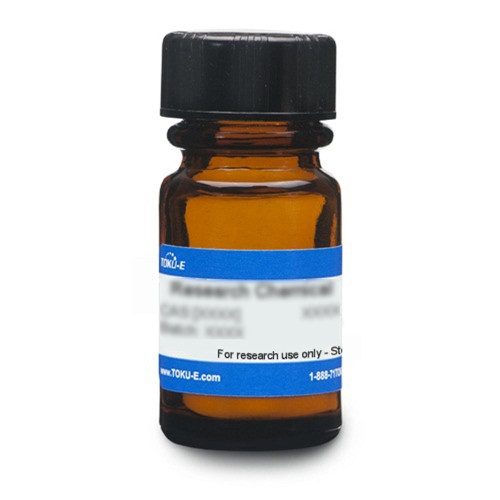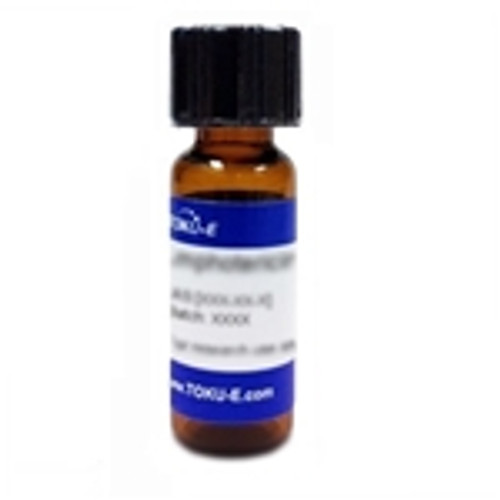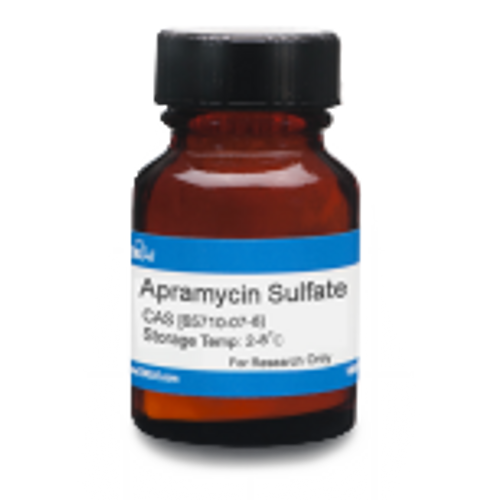Ceftolozane Sulfate is a broad-spectrum, fifth-generation, 3'-aminopyrazolium cephalosporin. It is structurally similar to cefazidime. Ceftolozane belongs to the β-lactam group of antibiotics. It can be used as a reference standard for impurity profiling and stability testing. It can also be used for penicillin binding protein (PBP) studies. It was approved by the FDA in 2014 (Cubist Pharmaceuticals) in combination with tazobactam, a β-lactamase inhibitor. This combination has activity similar to ceftazidime.
We also offer:
- Ceftolozane Sulfate, Stabilized with Arginine (C261)
| Mechanism of Action |
Cephalosporins interfere with PBP (penicillin binding protein) activity involved in the final phase of peptidoglycan synthesis. Ceftolozane is a potent PBP3 inhibitor and has a higher affinity for PBP1b compared with other β-lactam agents. PBP’s catalyze a pentaglycine crosslink between alanine and lysine residues providing additional strength to the cell wall. Without a pentaglycine crosslink, the integrity of the cell wall is severely compromised and ultimately leads to cell lysis and death. PBPs of P. aeruginiosa include PBP1b, PBP1c and PBP3. PBP's of E. coli include PBP3. Resistance to cephalosporins is commonly due to cells containing plasmid-encoded β-lactamases such as AmpC β-lactamase. Resistance may also include modification of PBPs by gene acquisition or target alteration, up-regulation of efflux pumps, and loss of outer membrane porin. |
| Spectrum | Ceftolozane Sulfate is effective against Gram-positive bacteria including Streptococcus anginosus. It is also effective against Gram-negative bacteria including multi-drug resistant Pseudomonas aeruginosa (PBP1b, PBP1c and PBP3) and E. coli (PBP3). |
| Microbiology Applications | In a study of P. aeruginosa using murine pulmonary, urinary tract, and burn wound models of infection, Ceftolozane's efficacy was comparable or superior to Ceftazidime and imipenem. The MIC that inhibited 90% of isolates was 1 µg/ml. It was highly stable against AmpC β-lactamase, the main resistance mechanism for cephalosporins (Takeda et al, 2007). |
| Molecular Formula | C23H31N12O8S2 ∙ HSO4 |
| References |
Cho JC, Fiorenza MA, Estrada SJ (2015) Ceftolozane/Tazobactam: A novel cephalosporin/β-lactamase inhibitor combination. Pharmacother. 35(7):701-715 PMID 26133315 Melchers MJB, van Mil ACH, Mouton JW (2015) In vitro activity of Ceftolozane alone and in combination with Tazobactam against extended-spectrum, β-lactamase-harboring Enterobacteriaceae. Antimicrob. Agents Chemother. 59 (8):4521-4525 Takeda S, Nakai T, Wakai Y, Ikeda F, and Hatano K (2007) In vitro and in vivo activities of a new cephalosporin, FR264205, against Pseudomonas aeruginosa. Antimicrob. Agents. Chemother. 51(3):826-830 PMID 17145788 Toda A et al (2008) Synthesis and SAR of novel parenteral anti-pseudomonal cephalosporins: Discovery of FR264205. Bioorg. Med. Chem. Lett. 18(17):4849-4852 |







